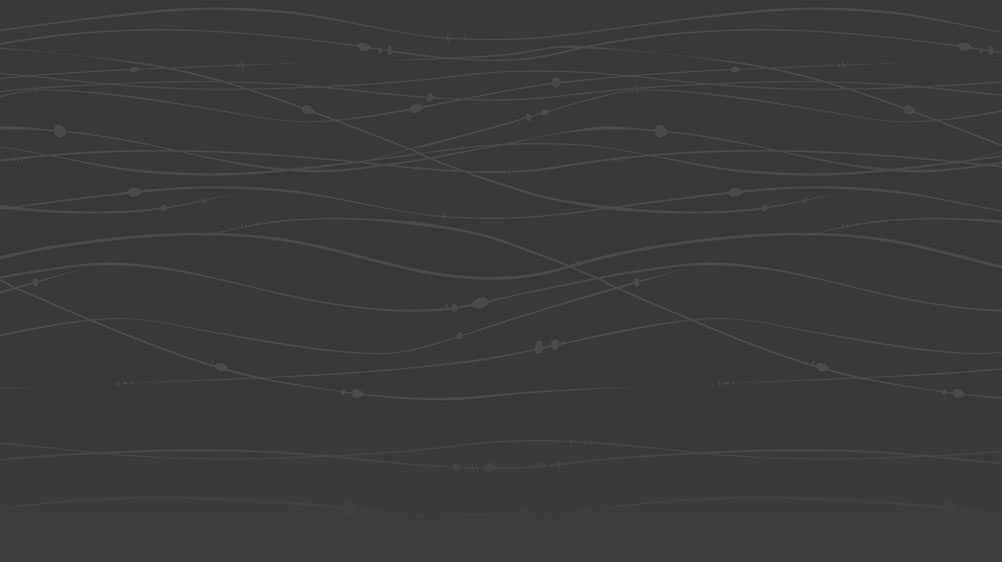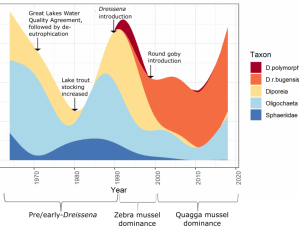

The Laurentian Great Lakes have experienced multiple anthropogenic changes in the past century, including cultural eutrophication, phosphorus abatement initiatives, and the introduction of invasive species. The furthest downstream in the Great Lakes system, Lake Ontario is among the most impaired. Benthos is the diverse community of bottom dwelling invertebrates important as fish food and water quality indicators. The Lake Ontario benthos has been studied intensively in the last six decades and provided valuable insights into the impact of environmental changes over time.
In 2018, the Great Lakes Center, in collaboration with the US EPA’s Great Lakes National Program Office, collected lake-wide benthic data within the Cooperative Science and Monitoring Initiative and Long-term Monitoring programs. In addition, we compiled all the lake-wide studies of benthic invertebrates over the last 54 years and compared them to our data to assess the major drivers of long-term changes in benthos. We found that the benthic community of Lake Ontario underwent significant transformations that correspond with three major periods. The first period, pre/early Dreissena period (1964–1990), was characterized by high densities of mysis (Diporeia spp.), fingernail clams (Sphaeriidae), and oligochaetes worms (Tubificidae). The same groups were prevalent during the next period of zebra mussel dominance (in the 1990s). The most recent period of quagga mussel dominance (2000s to present) is characterized by the shift of the bulk of mussels deeper into the lake causing dramatic changes in the community, including the near-complete disappearance of Diporeia and Sphaeriidae and the increase in abundance of quagga mussels and oligochaetes. Therefore, the Lake Ontario benthic community, which was historically dominated by Diporeia, Oligochaeta, and Sphaeriidae, has changed to a community dominated by quagga mussels and Oligochaeta. Dreissenids, especially the quagga mussel, were the major drivers of these changes.
The resulting research paper, “Six decades of Lake Ontario ecological history according to benthos,” is published online in Journal of Great Lakes Research.
Graph description: The density of five major benthic groups in Lake Ontario in 1964–2018: Dreissena polymorpha, Dreissena rostriformis bugensis, Diporeia spp. (mysis), Oligochaeta (tubificid worms), and Sphaeriidae (fingernail clams). The graph is additive, showing the density of each taxa stacked on the others. The three study periods are also delineated: Pre/early Dreissena from 1964–1990, Zebra mussel (D. polymorpha) dominance (1990–2000), and Quagga mussel (D. r. bugensis) dominance (2000–2018). Four notable events are included: the Great Lakes Water Quality Agreement, followed by de-eutrophication, in 1970; Lake trout stocking increased, in 1980; Dreissena introduction, in 1990; and Round goby introduction, in 2000.
Some content on this page is saved in PDF format. To view these files, download Adobe Acrobat Reader free. If you are having trouble reading a document, request an accessible copy of the PDF or Word Document.
